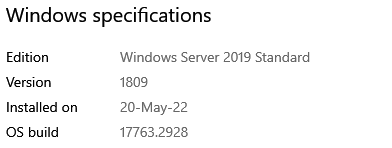pfSense with CloudFlare (and WireGuard - soon) - setup AD DS
-
For IPv6
Unless you are actually using IPv6 and have a public IPv6 address through your ISP, you will need to go in and delete all the IPv6 root servers on the Windows AD box. You do that on the same screen where you checked the resolving. Just select and remove the IPv6 addresses (again, if you don't have a public IPv6 address for pfSense. -
For DNS:
Do you have any rules in place on the pfSense firewall that would be interfering here? Do you have DNS redirects in place?And it really makes zero sense that as soon as you enable the Resolver on pfSense that things start working. That really screams a misconfiguration someplace.
My first thought is your client is looking to pfSense for DNS, but from the screen shot you posted that does NOT seem to be the case. That leaves maybe a firewall rule or DNS redirect on the firewall that is interfering with your AD server's DNS role. Let's see your LAN interface firewall rules and any you might have on the FLOATING RULES tab. If DNS works when you enable the Resolver on pfSense, then that means your client is getting sent there for DNS for some reason (but it should not be).
While I don't think it's the problem here, you really do not need the forwarder IP addresses if you are going to use the root hints and let AD DNS resolve.
-
I have done that in the DNS tool - root hints. There are no IPv6 addresses there (except the Link-Local one)...if you disable ipv6 protocol completely - you get other errors (apparently AD DS needs ipv6 for something).

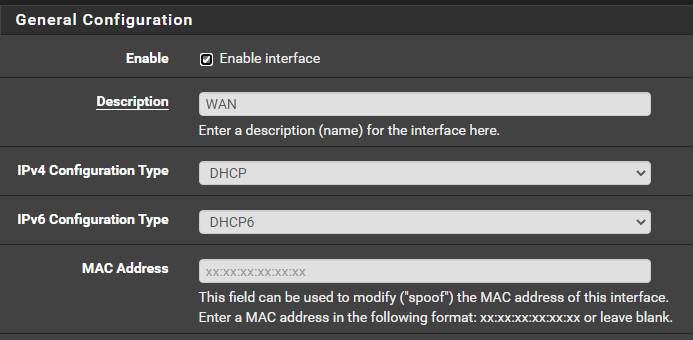
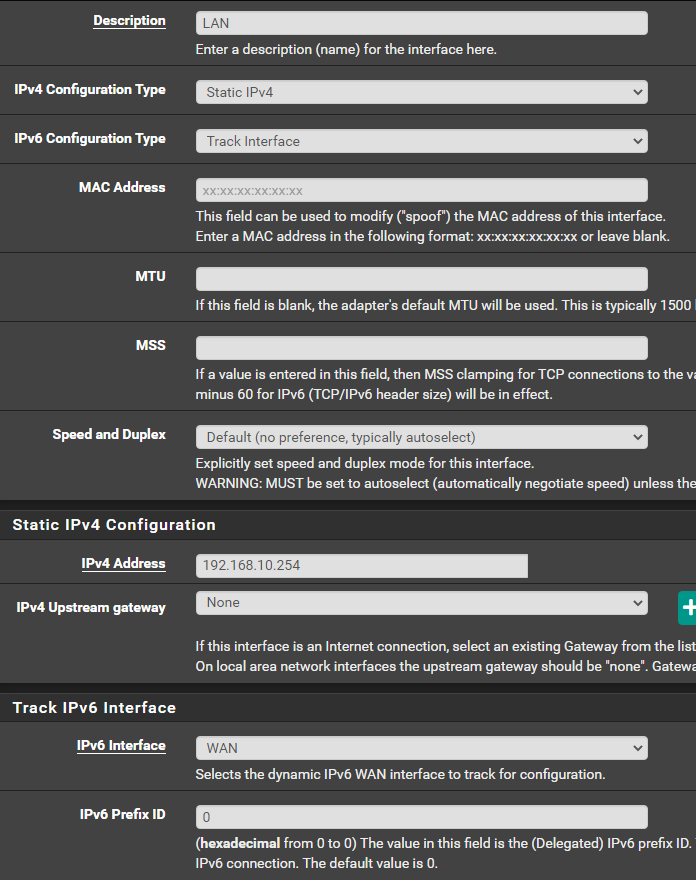
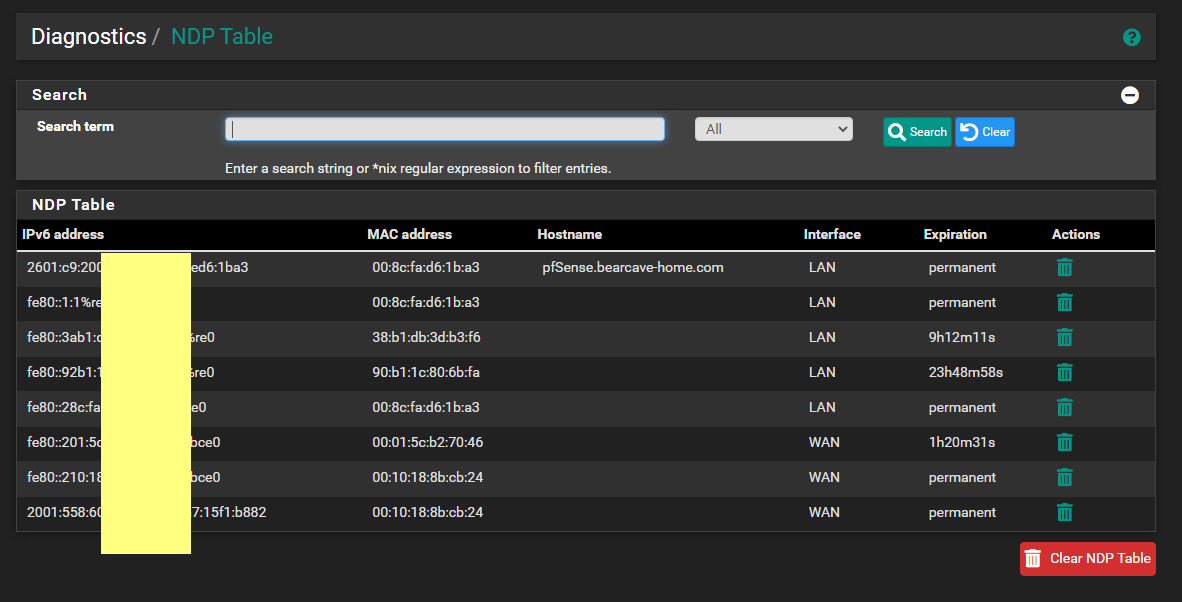
-
@bmeeks said in pfSense with CloudFlare (and WireGuard - soon) - setup AD DS:
For DNS:
Do you have any rules in place on the pfSense firewall that would be interfering here? Do you have DNS redirects in place?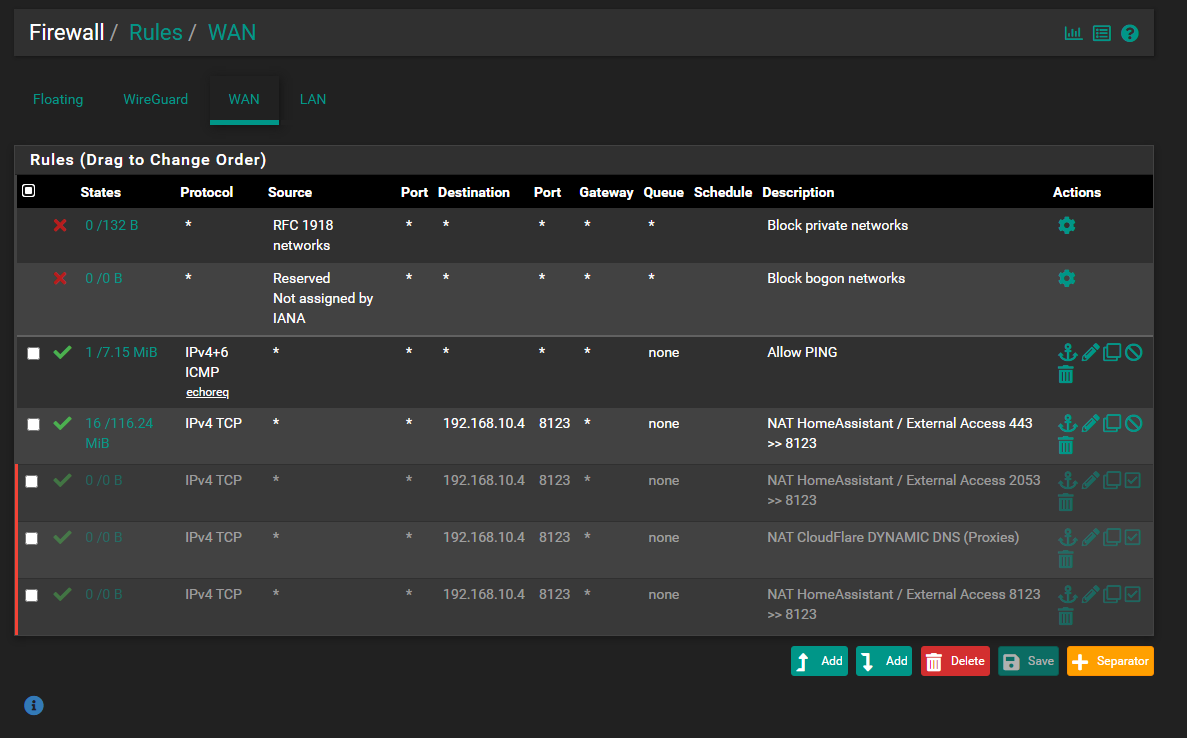
And it really makes zero sense that as soon as you enable the Resolver on pfSense that things start working. That really screams a misconfiguration someplace.
My first thought is your client is looking to pfSense for DNS, but from the screen shot you posted that does NOT seem to be the case. That leaves maybe a firewall rule or DNS redirect on the firewall that is interfering with your AD server's DNS role. Let's see your LAN interface firewall rules and any you might have on the FLOATING RULES tab. If DNS works when you enable the Resolver on pfSense, then that means your client is getting sent there for DNS for some reason (but it should not be).
While I don't think it's the problem here, you really do not need the forwarder IP addresses if you are going to use the root hints and let AD DNS resolve.
-
@bearhntr said in pfSense with CloudFlare (and WireGuard - soon) - setup AD DS:
@bmeeks said in pfSense with CloudFlare (and WireGuard - soon) - setup AD DS:
For DNS:
Do you have any rules in place on the pfSense firewall that would be interfering here? Do you have DNS redirects in place?
And it really makes zero sense that as soon as you enable the Resolver on pfSense that things start working. That really screams a misconfiguration someplace.
My first thought is your client is looking to pfSense for DNS, but from the screen shot you posted that does NOT seem to be the case. That leaves maybe a firewall rule or DNS redirect on the firewall that is interfering with your AD server's DNS role. Let's see your LAN interface firewall rules and any you might have on the FLOATING RULES tab. If DNS works when you enable the Resolver on pfSense, then that means your client is getting sent there for DNS for some reason (but it should not be).
While I don't think it's the problem here, you really do not need the forwarder IP addresses if you are going to use the root hints and let AD DNS resolve.
Not WAN rules. Show LAN rules and the FLOATING rules (if you have any of those).
-
@bearhntr said in pfSense with CloudFlare (and WireGuard - soon) - setup AD DS:
I have done that in the DNS tool - root hints. There are no IPv6 addresses there (except the Link-Local one)...if you disable ipv6 protocol completely - you get other errors (apparently AD DS needs ipv6 for something).




I don't think you understood what I was saying in my IPv6 post.
If you have do NOT have a public IPv6 address on your WAN (and thus a delegation for your LAN), then you would remove the root hints IPv6 addresses. But since you DO have a public IPv6 (since you are showing one), then do NOT remove the IPv6 addresses for the root hints. And make sure that your AD domain controllers have proper IPv6 addresses assigned from the IPv6 subnet used on your LAN.
-
Also, you will need to enter the appropriate domain overrides in the DNS Resolver on pfSense so that
unboundwill know to go ask your AD DNS server for the local hostnames of local devices listed in things like the ARP table.But having (or not having) the domain overrides configured has no impact on external DNS lookups working. You have still seem to have something misconfigured for that not to be working from a client machine on your LAN.
-
IPv6 on your LAN
You did not state initially state you wanted to use IPv6. That is possibly going to be problematic if you do not have a static IPv6 subnet to work with (meaning NOT one configured by tracking your WAN IPv6 delegation).Did you configure a DHCPv6 setup in the Active Directory DHCP server? If so, realize that unless you have a true static IPv6 prefix, you will have to change the DHCPv6 scope every time your WAN prefix changes.
If IPv6 is available, Windows will default to using it first. So that means the IPv6 configuration must be fully functional.
You can, of course, let pfSense be the DHCPv6 server (or use something like SLAAC). But if you do that, local clients will not have their IPv6 address registered in the Active Directory DNS.
-

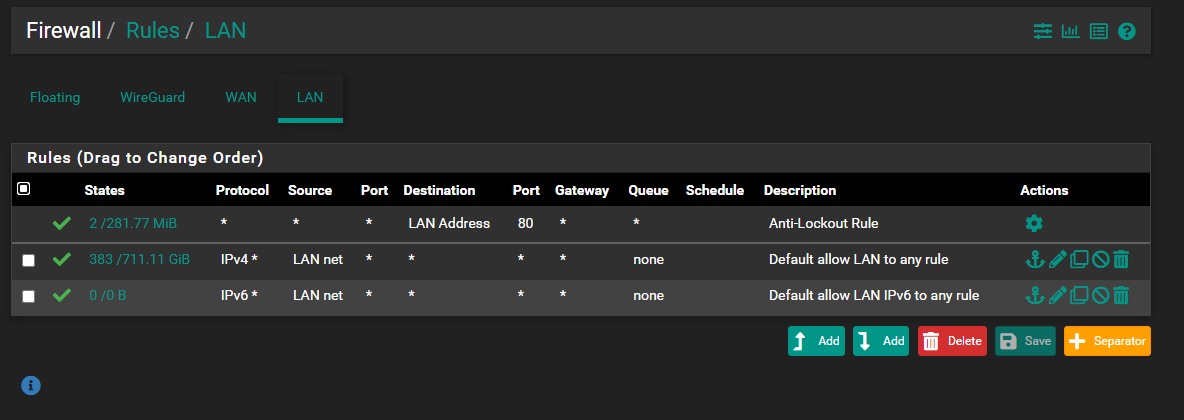
WireGuard is there - but it has not been setup yet or configured. Just the PACKAGE installed.
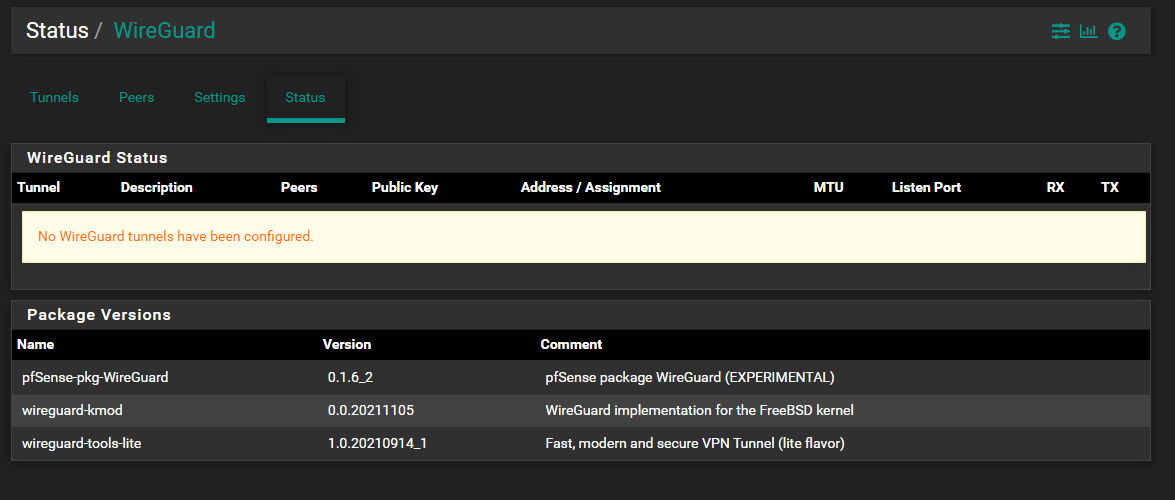
-
@bearhntr said in pfSense with CloudFlare (and WireGuard - soon) - setup AD DS:


WireGuard is there - but it has not been setup yet or configured. Just the PACKAGE installed.

Okay, I don't see any DNS redirect rules.
Let's do this step-by-step.
- Turn off the DNS Resolver on pfSense (disable it for now).
- Open a command prompt session on a Windows client on your LAN (use either a laptop or desktop PC).
- Execute this command:
nslookup cnn.comPost what comes back from that command. What should happen is your AD DNS server should go out and resolve that domain name to several IPv4 and IPv6 addresses. Here is what that looks like on my desktop Windows PC.
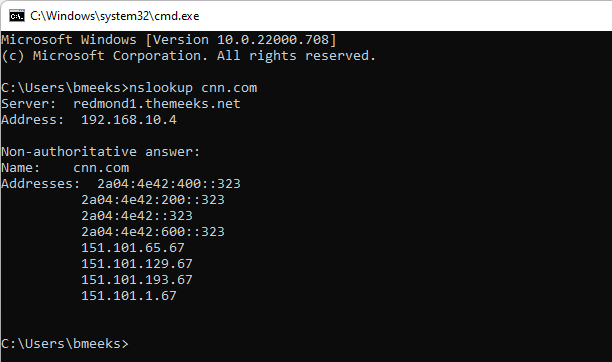
You can see in the above screen shot that the DNS lookup request was handled by one of my domain controllers (redmond1 is the machine name) at IP address 192.168.10.4. It resolved the domain "cnn.com" to that list of IP addresses.
- If the above steps don't work, then let's first figure out why and get that working.
-
-
@bmeeks said in pfSense with CloudFlare (and WireGuard - soon) - setup AD DS:
I wanted to say thank you again for your assist with this.
IPv6 on your LAN
You did not state initially state you wanted to use IPv6. That is possibly going to be problematic if you do not have a static IPv6 subnet to work with (meaning NOT one configured by tracking your WAN IPv6 delegation).Before I decided to move to the AD DS to handle DNS and DHCP, pfSense was my DNS and DHCP/DHCPv6 -- using those same settings I showed earlier...WAN (DHCP / DHCPv6 from my ISP) and LAN (Track Interface = WAN). I would get an IPv6 address for both of them - and I watched them for weeks - they never changed....and my devices were indeed getting v6 addresses.
Did you configure a DHCPv6 setup in the Active Directory DHCP server? If so, realize that unless you have a true static IPv6 prefix, you will have to change the DHCPv6 scope every time your WAN prefix changes.
No - not yet...that is what I meant when I mentioned that I wanted to set that up. I just find it strange as there are no v6 Root Hints configured - but the Best Practices Analyzer in Windows shows them.
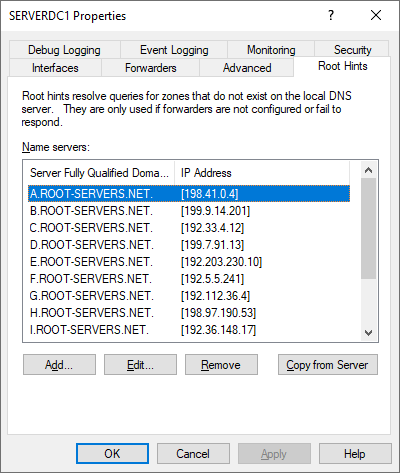
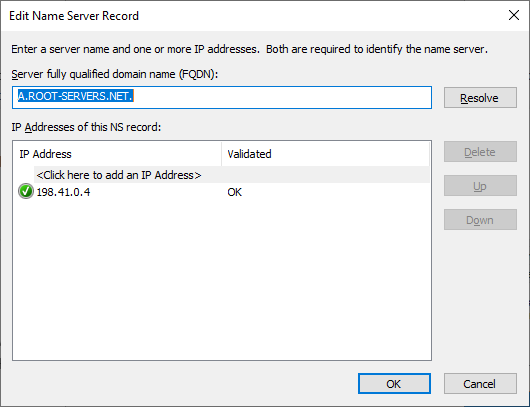
If IPv6 is available, Windows will default to using it first. So that means the IPv6 configuration must be fully functional.
You can, of course, let pfSense be the DHCPv6 server (or use something like SLAAC). But if you do that, local clients will not have their IPv6 address registered in the Active Directory DNS.
-
I have also noticed that only a few of my devices when they get a DHCP address - - are registering in the DNS. Before I made this change -- none of them were doing this.
So when I ping a device by name - I get no response (no resolution). Same if I ping the IP.

Does not make any sense why DNS records are not getting created for my network in DNS.
-
@bearhntr said in pfSense with CloudFlare (and WireGuard - soon) - setup AD DS:
I have also noticed that only a few of my devices when they get a DHCP address - - are registering in the DNS. Before I made this change -- none of them were doing this.
So when I ping a device by name - I get no response (no resolution). Same if I ping the IP.

Does not make any sense why DNS records are not getting created for my network in DNS.
Checking that option just tells the DHCP server to always update DNS. This is sometimes required for dumb devices like IoT stuff. But in order for this to actually work, the DHCP client on the device requesting an IP address has to have some kind of hostname to start with that it can give to the DHCP server when asking for an IP. Otherwise there is nothing for the DHCP server to put into DNS. It can't pull the hostname out of the ether. The requesting device must offer it first.
-
@bearhntr said in pfSense with CloudFlare (and WireGuard - soon) - setup AD DS:
@bmeeks said in pfSense with CloudFlare (and WireGuard - soon) - setup AD DS:
I wanted to say thank you again for your assist with this.
IPv6 on your LAN
You did not state initially state you wanted to use IPv6. That is possibly going to be problematic if you do not have a static IPv6 subnet to work with (meaning NOT one configured by tracking your WAN IPv6 delegation).Before I decided to move to the AD DS to handle DNS and DHCP, pfSense was my DNS and DHCP/DHCPv6 -- using those same settings I showed earlier...WAN (DHCP / DHCPv6 from my ISP) and LAN (Track Interface = WAN). I would get an IPv6 address for both of them - and I watched them for weeks - they never changed....and my devices were indeed getting v6 addresses.
Did you configure a DHCPv6 setup in the Active Directory DHCP server? If so, realize that unless you have a true static IPv6 prefix, you will have to change the DHCPv6 scope every time your WAN prefix changes.
No - not yet...that is what I meant when I mentioned that I wanted to set that up. I just find it strange as there are no v6 Root Hints configured - but the Best Practices Analyzer in Windows shows them.


If IPv6 is available, Windows will default to using it first. So that means the IPv6 configuration must be fully functional.
You can, of course, let pfSense be the DHCPv6 server (or use something like SLAAC). But if you do that, local clients will not have their IPv6 address registered in the Active Directory DNS.
You will likely want to update the list of root servers by clicking the Copy from Server button and putting the IP address of one of the root servers in the box within the dialog that pops up. Use 191.41.0.4. That will pull in a fresh list and you should then see several IPv6 servers.
-
@bearhntr said in pfSense with CloudFlare (and WireGuard - soon) - setup AD DS:
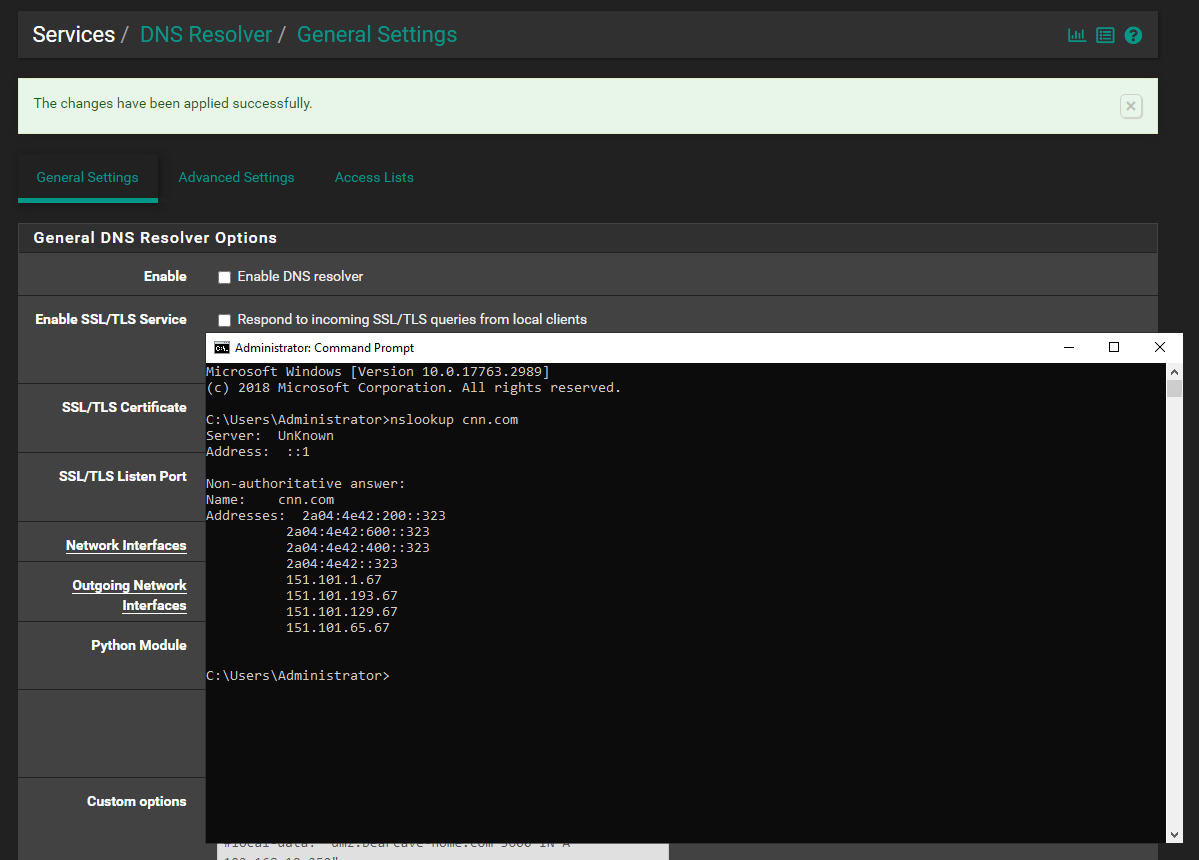
In your screenshot above, notice that your AD DNS server does not have a hostname shown. It says "Unknown".
Did you create a proper static hostname entry for it in the forward lookup zone in DNS? Also, do you have a proper reverse pointer lookup zone defined and is there a record there pointing to the hostname for the static IP of the AD DNS server?
Refer back to my example and you will see that
nslookupshould be able to resolve a valid hostname for your AD DNS server. Mine was "redmond1.themeeks.net", for example. -
That was the first thing that I did when I setup the DNS.
See entry for 192.168.10.250

the PTR record is also there for it

Notice that only the OP7010-BEAR created a DNS record when DHCP gave it an address...the 2x entries for it in the REV LOOKUP are from a reboot where I had the WiFi turned on...it got .26....wired is .33. The last entry in the reverse lookup is my work laptop which is on another VPN accessed Domain.
I also just noticed that the NETWORK is no longer showing as a DOMAIN - but as PRIVATE:
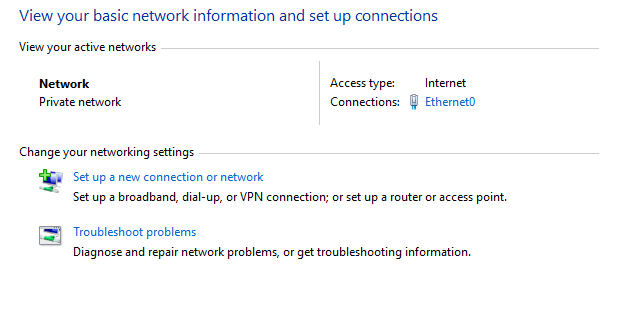
---this is apparently a known "BUG" in Windows 2019.
-
I think I may have it all working. pfSense has the DOMAIN overrides in place for the ipv4 and v6 addresses.
There are no DNS severs in pfSense GENERAL setup area.
There are no FORWARDERS in AD DNS. All root hints (v4 and v6) are populated and resolve. Some of my devices are picking up IPv6 addresses on reboot.
Still not getting things added to DNS for DHCP reservations...but I am gonna watch it and see how it goes as they start expiring.
NSLookup is now showing IPv6 address for DNS/DC - but not the IPv4 (on the AD DS server).
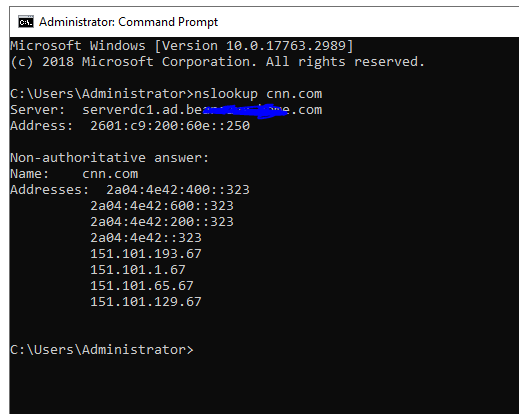
AGAIN - Much appreciate for the help. I will update as I learn more.
-
@bearhntr said in pfSense with CloudFlare (and WireGuard - soon) - setup AD DS:
I think I may have it all working. pfSense has the DOMAIN overrides in place for the ipv4 and v6 addresses.
There are no DNS severs in pfSense GENERAL setup area.
There are no FORWARDERS in AD DNS. All root hints (v4 and v6) are populated and resolve. Some of my devices are picking up IPv6 addresses on reboot.
Still not getting things added to DNS for DHCP reservations...but I am gonna watch it and see how it goes as they start expiring.
NSLookup is now showing IPv6 address for DNS/DC - but not the IPv4 (on the AD DS server).

AGAIN - Much appreciate for the help. I will update as I learn more.
Glad it is working better. Windows prefers IPv6 when available, so no surprise about how the IP addresses are showing up.
As for DNS registration of local hosts, that is highly dependent on the dhcp client app on the local host. Things like Windows and most Linux desktops will either by default supply a desired hostname when requesting a DHCP address, or they can be configured to do so. Some Linux operating systems don't do that by default, but can easily be configured to supply a desired hostname with the DHCP request.
IoT devices are a toss up, though. Some may, but I suspect most won't, supply a desired hostname when requesting an address via DHCP. For those devices, you either need to do static IP assignments via MAC reservations in DHCP and manually provide static DNS names, or just forgo that feature for some devices.
IPv6 can also be a hinderance here because devices can and will have multiple IPv6 addresses by default (privacy extensions, for example). All of those may not get DNS registration. That's one of my beefs with IPv6 -- it seems referring to devices by a hostname was not fully thought through when it comes to all the multiple IPv6 addresses a client might have.


